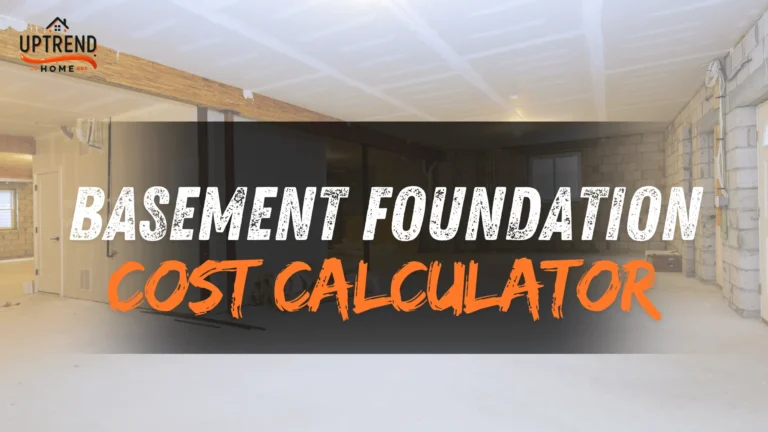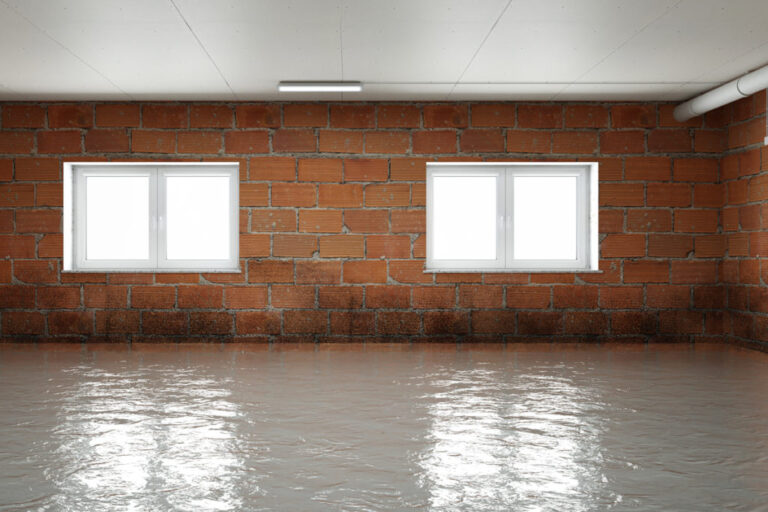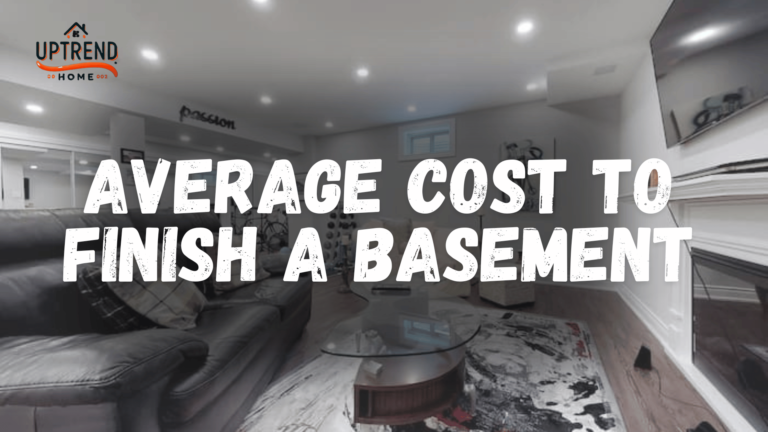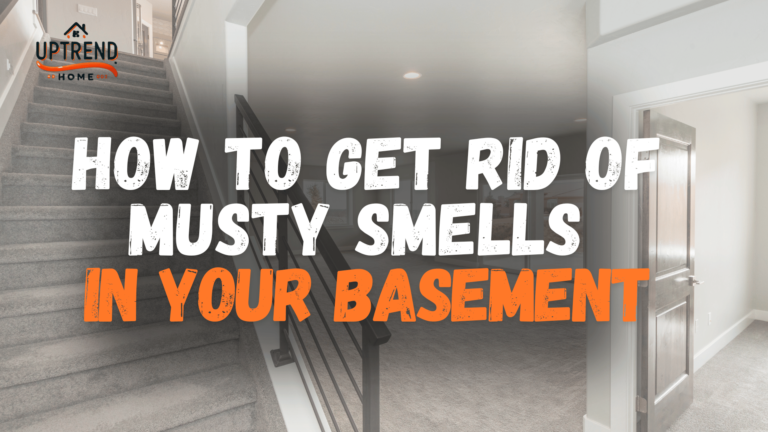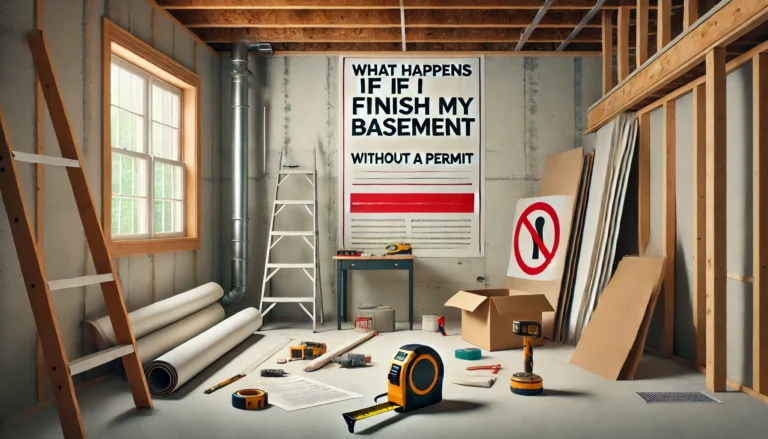How Much Does It Cost to Waterproof a Basement? Complete Guide
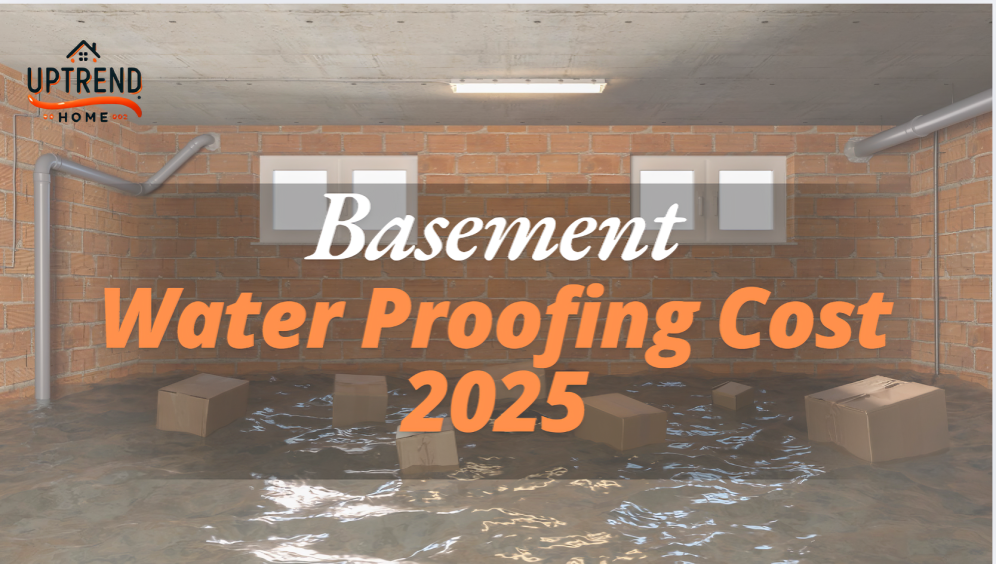
Waterproofing your basement is a wise investment that not only protects your home but also ensures peace of mind. Whether you’re dealing with persistent leaks, dampness, or a full-blown flood risk, addressing these issues early can save you from costly repairs down the line. How much does it cost to waterproof a basement? In 2025, the answer depends on several factors.
The cost of basement waterproofing can vary widely, depending on factors like the size of your basement, the severity of water damage, and the methods used. On average, you can expect to pay anywhere between $2,500 and $10,000. This range might seem broad, but don’t worry—we’ll guide you through the key cost factors to give you a clearer picture.
Why is Basement Waterproofing Essential?
A dry basement isn’t just about comfort; it’s about safeguarding your home’s foundation, improving air quality, and even boosting property value. Imagine your basement going from a musty, damp storage space to a clean, usable area—talk about killing two birds with one stone!
Factors That Influence the Cost
From the size of your basement to the type of waterproofing method you choose (interior vs. exterior), there are many moving parts that determine how much you’ll pay. We’ll dive deeper into these factors below so you can make an informed decision.
Don’t Overlook the Long-Term Savings
While the upfront cost of waterproofing might seem hefty, it’s a classic case of “a stitch in time saves nine.” Proper waterproofing can prevent structural damage, mold growth, and costly repairs later on. Think of it as an insurance policy for your home.
By the end of this guide, you’ll not only understand the costs involved but also how to choose the best solution for your basement. So, let’s roll up our sleeves and get started!
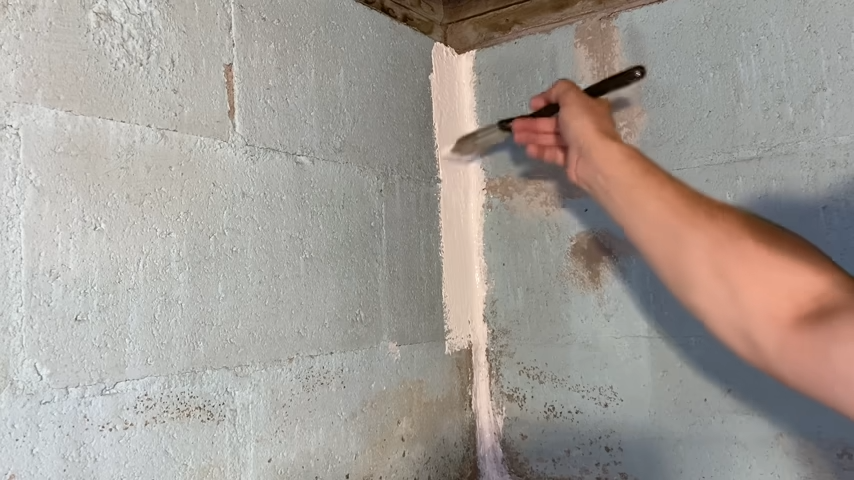
What Is Basement Waterproofing and Why Is It Important?
Basement waterproofing is the process of protecting your basement from water intrusion. It involves using various techniques and materials to seal cracks, redirect water flow, and maintain a dry, healthy environment. Whether you’re dealing with minor dampness or major leaks, waterproofing is the key to preserving your basement and home.
Understanding the Purpose of Waterproofing
The main goal of basement waterproofing is to prevent water damage. Excessive moisture can lead to mold growth, weakened foundations, and ruined belongings. By addressing water issues, waterproofing ensures your basement stays dry, clean, and usable year-round.
Think of it this way: your basement is the foundation of your home—quite literally. A properly waterproofed basement doesn’t just protect your space; it protects your investment. Plus, it can improve indoor air quality and make your home more energy-efficient.
Common Signs You Need Basement Waterproofing
Not sure if your basement needs waterproofing? Here are the telltale signs to watch out for:
- Damp Walls or Floors: Persistent dampness can be an early indicator of water seepage.
- Musty Odors: Unpleasant smells often point to hidden moisture or mold growth.
- Visible Mold or Mildew: These fungi thrive in wet environments and can cause health problems.
- Water Stains: Discoloration on walls or floors is a clear sign that water is entering your basement.
- Efflorescence: This white, chalky substance forms when water evaporates and leaves mineral deposits behind.
- Cracks in Walls or Floors: Even small cracks can let water seep into your basement.
- Pooling Water or Puddles: Standing water after rain is a strong sign of drainage issues.
If you notice any of these issues, it’s time to take action. Ignoring the problem could lead to bigger headaches, including structural damage and expensive repairs.
Basement waterproofing isn’t just about fixing problems—it’s about preventing them. When done right, it transforms your basement into a dry, functional space while protecting the rest of your home from harm.
Interior vs. Exterior Basement Waterproofing
When it comes to safeguarding your basement, you’ll encounter two main approaches: interior waterproofing and exterior waterproofing. Understanding these methods, along with their costs, is essential to make an informed decision about how much it costs to waterproof a basement.
What’s the Difference?
- Interior Basement Waterproofing:
This method focuses on addressing water that has already entered your home. Common solutions include applying waterproof coatings, installing drainage systems, or adding sump pumps to manage leaks effectively.- Best for handling moisture that seeps through walls or floors.
- Typically more affordable than exterior solutions, making it a popular choice for homeowners curious about basement waterproofing prices.
- Exterior Basement Waterproofing:
A preventive solution that stops water from entering your basement in the first place. It involves sealing the foundation’s exterior and creating a robust drainage system to divert water.- Protects the foundation from external damage.
- Often comes with higher exterior waterproofing costs due to labor-intensive excavation.
Pros and Cons of Interior Waterproofing
Pros:
- Lower cost: Interior solutions are often the first step for those wondering about the cost of basement waterproofing on a budget.
- Minimal disruption: No need for major landscaping changes.
- Quick installation: Suitable for immediate results, especially if you’re dealing with leaks.
Cons:
- Not preventive: Unlike exterior waterproofing, it doesn’t address the root cause of the problem.
- Recurring maintenance: Systems like sump pumps may need regular servicing.
Pros and Cons of Exterior Waterproofing
Pros:
- Comprehensive protection: Ideal for homeowners asking, How much does it cost to waterproof a basement from outside? It prevents water from ever reaching your foundation.
- Long-lasting results: Enhances the durability of your foundation and home value.
Cons:
- Higher price tag: The cost to waterproof basement exteriors is often higher due to extensive labor.
- Time-consuming: Installation might take several days, involving excavation around the property.
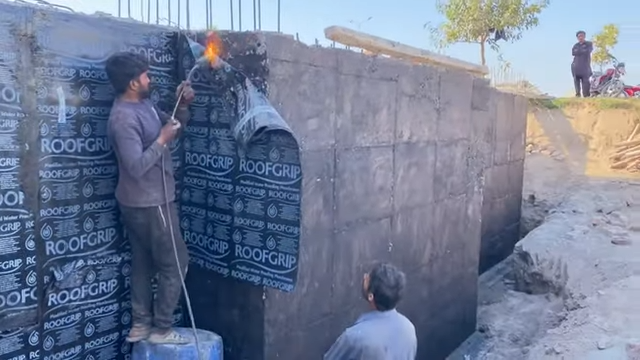
Basement Waterproofing Cost Factors
The cost to waterproof a basement can vary significantly depending on a range of factors. From the size of your space to the condition of your foundation, understanding these variables can help you plan and budget effectively.
Size and Layout of the Basement
The size and layout of your basement are among the primary determinants of basement waterproofing cost. Larger basements require more materials, labor, and time, which can drive up costs. A 1,000 sq ft basement waterproofing cost will differ greatly from a smaller space, with expenses increasing as the square footage grows. If you’re also considering the cost to finish a basement, keep in mind that irregular layouts or basements with multiple rooms may require specialized solutions, further adding to the final price.
Interior vs. Exterior Sealing Costs
Choosing between interior waterproofing and exterior waterproofing affects the budget. Interior waterproofing methods like sealants or drainage systems are typically less expensive, while exterior basement waterproofing cost includes excavation and foundation treatment, making it a pricier option. However, exterior waterproofing often provides a more robust and long-lasting solution for foundational issues.
Sealant Type and Quality
The type and quality of sealant you choose can influence costs. Premium waterproofing sealants provide greater durability but come at a higher price. While budget-friendly options exist, they may not offer the same level of protection. Balancing cost and quality is essential for a cost-effective basement waterproofing solution.
Labor and Geographic Location
Labor costs vary by region, impacting the overall cost to waterproof a basement. Urban areas with higher labor rates typically result in increased prices compared to rural locations. Additionally, the availability of specialized contractors in your area can influence both pricing and timelines.
Age and Condition of the Foundation
Older homes or those with a compromised foundation often require additional work, which can raise costs. The condition of your foundation—whether it has cracks, leaks, or other vulnerabilities—may necessitate repairs before waterproofing can begin, adding to the expense.
Additional Repairs (Cracks, Leaks, Mold)
Repairing issues like cracks, leaks, or mold significantly impacts basement sealing costs. For example, fixing a leaky basement before applying sealant can increase the cost to fix a leaky basement, but ensures long-term effectiveness. Mold remediation or addressing structural damages further adds to the total expense. Additionally, addressing these issues is crucial if you want to get rid of musty smells in your basement, as unresolved problems often lead to persistent odors and air quality concerns.
Permits and Inspection Fees
In some cases, permits and inspections are required for basement waterproofing, particularly for exterior solutions. These fees can vary by location but are a necessary part of the process to ensure compliance with local building codes.
Excavation or Landscape Adjustments
For exterior waterproofing, excavation is often necessary to access the foundation. The cost to waterproof basement exteriors includes excavation expenses, which can be substantial depending on the depth of the foundation and landscaping complexity. Adjusting or restoring landscaping post-excavation also adds to the overall price.
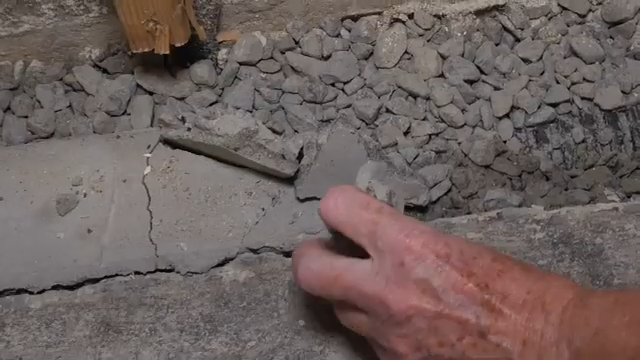
Cost Breakdown: Methods of Basement Waterproofing
Basement waterproofing methods vary widely, and so do their costs. Each approach addresses specific needs, from sealing cracks to installing comprehensive drainage systems. Below is a detailed cost breakdown of popular waterproofing methods, helping you choose the solution that fits your basement’s requirements and budget.
Crack Injection Repairs
Crack injection repairs are a cost-effective solution for sealing minor foundation cracks. This method involves injecting materials like epoxy or polyurethane to fill the cracks and prevent water infiltration.
- Cost Range: $250–$800 per crack.
- Best For: Small, isolated cracks in the foundation walls.
- Pros: Affordable and quick to apply.
- Cons: Not suitable for structural issues or widespread damage.
Waterproof Coatings and Sealants
Applying waterproof coatings or sealants to the interior or exterior walls creates a barrier against moisture. These materials are ideal for preventing minor water seepage.
- Cost Range: $500–$2,000 depending on the size of the area.
- Best For: Basements with light moisture problems.
- Pros: Easy to apply and cost-effective.
- Cons: Requires reapplication over time and doesn’t address severe water issues.
Sump Pump Installation
A sump pump helps redirect water away from your home by collecting it in a basin and pumping it out. It’s particularly effective in areas prone to flooding.
- Cost Range: $1,000–$3,000.
- Best For: Basements in flood-prone areas or with persistent water issues.
- Pros: Long-term solution for water accumulation.
- Cons: Requires regular maintenance and electricity to operate.
French Drains
French drains involve installing a trench filled with gravel and a perforated pipe to direct water away from your foundation. These can be installed inside or outside the basement.
- Cost Range: $5,000–$15,000.
- Best For: Basements with high water tables or significant water intrusion.
- Pros: Highly effective for managing large volumes of water.
- Cons: Expensive and may require significant excavation.
Vapor Barriers
Installing a vapor barrier helps prevent moisture and dampness from penetrating the basement walls or floors.
- Cost Range: $1,000–$4,000.
- Best For: Basements with humidity or minor dampness issues.
- Pros: Improves indoor air quality and protects against mold.
- Cons: Doesn’t address water pooling or leaks.
Interior Drainage Systems
An interior drainage system collects and redirects water that seeps through the foundation to a sump pump. It is installed along the basement’s perimeter.
- Cost Range: $2,000–$10,000.
- Best For: Homes with frequent water seepage.
- Pros: Effective and minimally invasive.
- Cons: Requires professional installation and regular maintenance.
Exterior Excavation and Sealing
The most comprehensive method, exterior waterproofing, involves excavating around the foundation and applying waterproof coatings and drainage systems to keep water out.
- Cost Range: $10,000–$20,000 or more.
- Best For: Homes with severe water infiltration or structural damage.
- Pros: Long-term, robust protection.
- Cons: Expensive and disruptive due to excavation.
This cost breakdown of basement waterproofing methods ensures that you have a clear understanding of the options available, helping you weigh the pros and cons while staying within your budget.
Additional Basement Waterproofing Costs
When planning your basement waterproofing budget, it’s essential to account for additional costs that might arise. These expenses can address related issues and improve the long-term effectiveness of your waterproofing efforts.
Mold Remediation and Prevention
Mold can thrive in damp basements, posing health risks and structural concerns. Mold remediation involves removing existing mold and preventing its return.
- Cost Range: $500–$6,000, depending on the extent of the damage.
- Factors Affecting Cost: Severity of mold growth, size of the affected area, and required treatments.
- Tip: Waterproofing combined with a dehumidifier can prevent mold recurrence.
Water Damage Restoration
If water infiltration has already caused damage, restoration services may be needed to repair walls, flooring, and furniture.
- Cost Range: $1,200–$5,000 or more.
- Factors Affecting Cost: Level of water damage, materials affected, and labor requirements.
- Tip: Address water damage promptly to avoid higher costs in the future.
Gutter and Downspout Adjustments
Improperly functioning gutters and downspouts can direct water toward your basement. Adjustments or repairs can help redirect water away from the foundation.
- Cost Range: $150–$1,000.
- Factors Affecting Cost: Type of gutters, extent of repairs needed, and additional features like gutter guards.
- Tip: Regular maintenance prevents clogs and reduces the risk of basement leaks.
Long-Term Maintenance and Warranties
To maintain the effectiveness of your waterproofing systems, periodic maintenance and warranties can add extra costs.
- Cost Range: $200–$500 annually for maintenance; warranty upgrades may vary.
- Factors Affecting Cost: Type of waterproofing system and warranty coverage terms.
- Tip: Invest in extended warranties for systems like sump pumps to ensure long-term protection.
DIY Basement Waterproofing vs. Hiring a Professional
While DIY basement waterproofing might seem like a cost-saving option, it comes with its own set of challenges and limitations. Here’s a breakdown to help you decide.
Can You Waterproof a Basement Yourself?
DIY waterproofing is possible for minor issues like sealing cracks or applying waterproof coatings. However, complex problems like foundation repairs or drainage system installation require professional expertise.
Pros and Cons of DIY Basement Waterproofing
- Pros:
- Lower upfront costs.
- Control over the project timeline.
- Great for minor issues like applying sealants.
- Cons:
- Limited effectiveness for major issues.
- Risk of improper application.
- Time-intensive and may require specialized tools.
- DIY Cost Estimate: $200–$1,000, depending on materials and tools.
When to Call a Professional
Some situations demand professional intervention to ensure long-lasting results:
- Persistent water pooling or flooding.
- Structural damage or large cracks in the foundation.
- Installing drainage systems or sump pumps.
- Extensive mold or water damage.
Professional Cost Estimate: $2,000–$20,000, depending on the scope of work.
By weighing the cost of DIY basement waterproofing against hiring a professional, you can make an informed decision tailored to your needs.
Benefits of Basement Waterproofing
Investing in basement waterproofing not only prevents water damage but also provides long-term advantages that can enhance your home’s overall value and functionality. Here’s how waterproofing can benefit your property:
Increased Home Value
A waterproofed basement can significantly increase the resale value of your home. Potential buyers are more likely to be attracted to a property with a dry, functional basement, knowing that future issues like water damage will be avoided.
- How It Helps: A dry, healthy basement can be used as livable space, adding square footage and making your home more appealing in the real estate market.
- Tip: Proper waterproofing helps avoid costly repairs down the line, making your home more desirable.
Prevention of Structural Damage
Water infiltration can weaken your home’s foundation, leading to costly repairs if left unaddressed. Waterproofing your basement helps prevent cracks, erosion, and other forms of structural damage caused by moisture.
- How It Helps: By keeping water out, waterproofing ensures the stability of your foundation, protecting your home from settlement and cracking.
- Tip: Waterproofing is a proactive step that saves you from major repair costs in the future.
Improved Air Quality and Health
Basements are often prone to humidity and mold growth, which can significantly affect indoor air quality. Waterproofing helps reduce moisture levels, leading to a cleaner and healthier living environment.
- How It Helps: By preventing mold, mildew, and allergens from thriving in a damp basement, waterproofing improves the overall air quality in your home, which can reduce respiratory issues and allergies.
- Tip: Combining waterproofing with a dehumidifier further reduces moisture, enhancing your home’s indoor climate.
Waterproofing your basement offers a variety of benefits that go beyond just preventing leaks. It can enhance your home’s value, safeguard its structural integrity, and create a healthier living space.
How to Save on Basement Waterproofing Costs
While basement waterproofing is an investment, there are several ways to reduce costs without compromising on quality. Here’s how you can save money while ensuring your basement stays dry and protected.
Opting for Preventative Measures
Preventing water damage before it happens is one of the most cost-effective ways to maintain a dry basement. Simple measures can help you avoid the need for expensive waterproofing later on.
- How It Helps: Routine maintenance like cleaning gutters, ensuring proper drainage, and sealing small cracks early on can prevent larger issues from arising, saving you money in the long run.
- Tip: Keep an eye on areas around your foundation that might need attention, and fix them before they become a bigger issue.
Choosing the Right Waterproofing Method
Different waterproofing methods come with different costs. By carefully selecting the right approach for your basement, you can save money while still ensuring effective protection.
- How It Helps: Some methods, such as crack injection or waterproof coatings, might be more affordable than more invasive solutions like exterior excavation. However, they may not be suitable for all basements.
- Tip: Assess your basement’s needs carefully and consider an option that addresses the specific problems you’re facing without going over budget.
Comparing Quotes from Multiple Contractors
Hiring a professional is often the best route, but prices can vary between contractors. By getting multiple quotes, you can ensure you’re paying a fair price for the work needed.
- How It Helps: Comparing quotes allows you to find a contractor who offers a balance of price and quality. Don’t be afraid to negotiate or ask for discounts.
- Tip: When comparing quotes, make sure the contractors provide a clear breakdown of the services they offer, including labor, materials, and warranties.
By implementing these strategies, you can minimize the costs of waterproofing while still ensuring your basement remains safe and dry. Always keep in mind that doing things right the first time will save you even more in the future.
Common Mistakes to Avoid When Waterproofing Your Basement
- Choosing the Cheapest Option
Opting for the lowest-priced waterproofing method can lead to subpar results and additional repairs in the future. - Ignoring the Source of Water
Simply covering up the water doesn’t solve the underlying issue. Identifying the source of water (e.g., leaks, cracks, or drainage issues) is essential. - Skipping Professional Assessment
A DIY approach may seem cost-effective, but neglecting expert advice could lead to ineffective solutions that don’t address the problem fully. - Overlooking Regular Maintenance
Waterproofing isn’t a one-time fix. Regular inspections and maintenance are crucial to ensure lasting protection.

